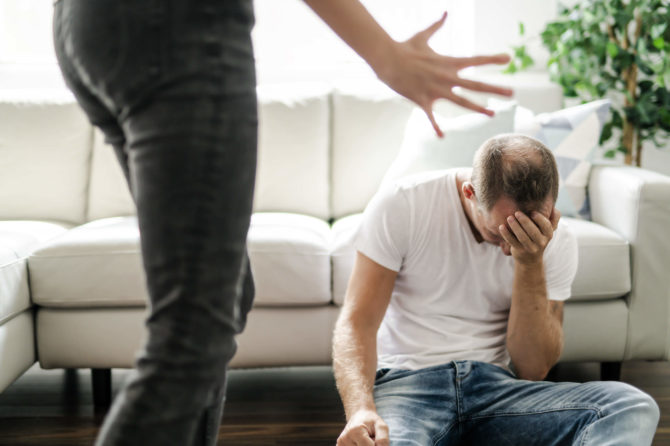
Domestic Violence Awareness
Every year, nearly 12 million Americans experience some form of domestic abuse by an intimate partner.
When most people hear the term “domestic violence,” they typically assume that the victim is a woman. While this is true in a majority of the cases that are reported, abuse of men happens more often than you might expect. The National Domestic Violence Hotline reports that 1 in 10 men in the United States has experienced rape, physical violence, and/or stalking by a partner.
Types of Domestic Violence
Domestic violence –– also known as intimate partner violence (IPV) –– is defined as violent or aggressive behavior within a domestic setting, typically where one person attempts to assert control over a current or former spouse or partner.
Domestic violence covers a broad range of abusive acts, such as:
- Physical –– As the most commonly recognized form of violence, physical abuse includes but is not limited to punching, slapping, strangling, biting, shoving, kicking, assault with a weapon, burning, and murder.
- Psychological –– Humiliation, yelling, manipulation, threats of violence, acts of intimidation, isolation, pathological jealousy, and stalking.
- Sexual –– In many cases, sexual abuse is linked to physical abuse (i.e., they may occur together or following a violent physical assault). This type of domestic violence includes unwanted sexual contact, attempted rape, rape, and rough or violent sexual behavior.
- Financial –– This particular form of abuse may involve withholding money, limiting the victim to an “allowance”, stealing from the victim, using the victim’s name to incur debt, or sabotaging work or employment opportunities.
- Spiritual –– A lesser known form of abuse, this entails the perpetrator belittling the victim’s moral, religious, or cultural beliefs and values and/or prohibiting him from practicing them.
Studies have also found that the LGBTQ+ community is at lower risk for all forms of domestic violence. According to the 2010 National Intimate Partner and Sexual Violence Survey, 26 percent of men in same-sex relationships experience rape, physical violence, stalking, or some combination of the three by an intimate partner in their lifetime. In comparison, 29 percent of heterosexual men experience similar forms of domestic violence.
The Social Stigma of Domestic Violence Against Men
The social stigma of domestic violence against men makes it more and more difficult for victims to come forward to report their abuse and ask for help. This is largely due to unfair stereotypes surrounding masculinity –– aka, men should be the “stronger sex” –– as well as increased skepticism from police and even criticism and dismissal from domestic violence hotlines. A study from Bridgewater State University in Massachusetts found that only 8 percent of male victims who called domestic violence hotlines found them very helpful. And in some cases, men are afraid of reporting abuse if it means having to disclose their sexuality (i.e., the incident(s) occurred in a same-sex relationship).
Additionally, the number of domestic violence shelters that admit women far outweigh those that admit men. Currently, there are only two temporary housing options exclusively for men in the United States –– one in Dallas, Texas and another in Batesville, Arkansas.
The Connection Between Domestic Violence and Substance Abuse
There is a strong correlation between substance abuse and domestic violence in the United States. According to the American Society of Addiction Medicine, substance abuse has been found to co-occur in 40-60% of IPV incidents, either in precipitating the violence or exacerbating it.
Studies have also found that domestic violence fueled by drug and alcohol consumption takes place in same-sex relationships at a higher rate than in heterosexual relationships. In 2013, the CDC released the results of a study on victimization by sexual orientation and found that 40% of gay men had been with a violent partner as opposed to 21 percent of straight men. Some studies suggest that substance abuse and addiction interventions are beneficial for men who have histories of intimate partner violence.
October is Domestic Violence Awareness Month
October is National Domestic Violence Awareness Month, which first began in 1981 by the National Coalition Against Domestic Violence. Since its inception, the single day of observance has become an entire month devoted to an array of activities conducted at the community, state, and national level.
Finding Your Voice
If you’re being harmed, it’s important to remember that it is not your fault; there is nothing you did to warrant the abuse and it’s not your job to fix the problem. Reach out to a friend, relative, health care provider, or another trustworthy contact to inform them of your situation and the abuse you’re enduring. And if your situation is life-threatening, call 911 immediately. Abusive relationships take an emotional toll on both men and children, which is why consistent counseling, one-on-one therapy, and support groups for domestic abuse survivors are crucial to healing and happiness.
Getting Help for a Loved One
If you’re worried a friend or family member may be involved in an abusive relationship, it’s important to offer support without passing judgment or telling him what he needs to do –– even though it may be well-intentioned. Reach out to a local domestic violence program to get their professional advice. Encourage your loved one to seek professional help and offer to go along for moral support. Most importantly, remember that you cannot save anyone, but you can be there for them unconditionally.
Leave a reply